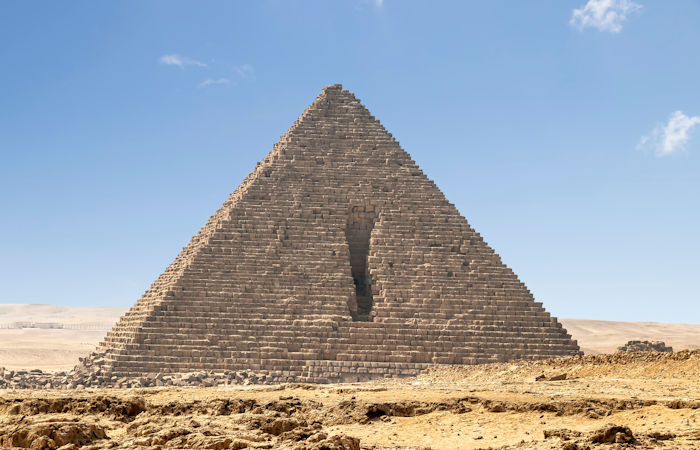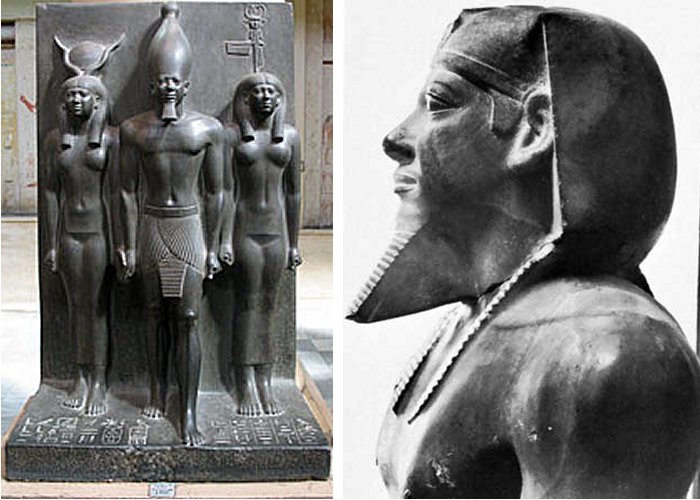Mysterious Pyramid Of Menkaure Remains An Ancient Puzzle
Ellen Lloyd - AncientPages.com - Pyramids are frighteningly anonymous structures.
Pharaohs built huge and well-constructed pyramids, tombs, and temples to glorify themselves and to be remembered after death, but their bodies were never inside these structures.
The Pyramid of Menkaure is the smallest of the three main Pyramids of Giza, located on the Giza Plateau in the southwestern outskirts of Cairo, Egypt. Credit: Adobe Stock - Alfredo
In none of them the bodies of builders or rulers were found, and when they were occasionally found, it turned out to be "very young" and had no connection to Egypt's ancient times.
The Old Kingdom stone pyramids were never actually ‘real’ tombs. The 19th-century so-called 'tomb theory' was only invented to replace earlier theories suggesting the pyramids as storehouses for grain or repositories of sacred measurements of the planet.
So for what purpose were these impressive gigantic structures built?
In fact, no one, even Sir William Flinders Petrie, the earliest authority on the pyramids of Giza, had any idea about it.
Isn't it strange that 'tens of millions of stone blocks used in Egypt’s large pyramids construction, from Meidum in the south to Abu Rawash in the north, and in no place is the name of their builders inscribed, except for a single quarry mark of red ochre paint in the Great Pyramid,' (Malkowski, Ancient Egypt 39,000 BC).
Left: Menkaure with Hathor on his right, and nome figure on his left; Right: Menkaure, detail of an alabaster statue from Giza; in the Egyptian Museum, Cairo Courtesy of the Egyptian Museum, Cairo; photograph, Hirmer Fotoarchiv, Munich
This single quarry mark 'was possibly forged by Richard Howard-Vyse under the pressure of competition with another archaeologist, the Italian Count Caviglia.'
Despite the claim that the pyramid was a tomb, several Egyptologists do recognize that the intent of the pyramid still remains a mystery.
Mysterious Pyramid of Menkaure
The 4,300-year-old pyramid of Menkaure, the smallest of the famous trio at Giza (some 200 feet lower than the other two), is now open to the public after the completion of its renovation.
The pyramid of Menkaure (Mycerinus) measures 356 feet (108 meters) along each side and some 215 feet (65 meters) in height and an angle of 51 degrees. It was built to serve as the tomb of the fourth dynasty Pharaoh Menkaure (2530 BC.-2500 BC.)
This pyramid is also very anonymous. We do not know much about Menkaure.
Researchers discovered an empty basalt sarcophagus, an anthropoid coffin lid made of wood, and some bones. These bones, along with the coffin, were later proved to be dated from the early Christian era and had no connection to Pharaonic times.
On the other hand, the basalt sarcophagus could have belonged to Menkaure.
Unfortunately, nobody had the opportunity to examine it because it had been lost at sea when the ship on which Vyse sent it to England had sunk off the coast of Spain.
Since it was a matter of record that the sarcophagus had been found empty by Vyse, it was once again assumed tomb robbers must have removed the pharaoh's body.'
This 'robbery theory' was only supported by 'evidence' of the missing mummies and grave goods.
The lack of bodies in the pyramids and the absence of decorations and inscriptions in countless galleries, chambers, corridors, and passageways are also evident.
The same is true regarding all three Giza pyramids. Not a single word - praising the pharaohs - has been inscribed on the pyramids' walls.
Other burial places of ancient Egypt have beautiful decorations, paintings, and inscriptions referring to the ritual spells and invocations indispensable for the deceased on his journey toward eternal life.
Nothing like that can be found in Giza's trio, and that's because these pyramids were not built to serve as tombs at all.
The sixth ruler of the 4th dynasty, Menkaure, built himself a pyramid one-tenth the size of Khafre's. And unlike the other Great Pyramids, whose walls were made of limestone, Menkaure's pyramid was covered with granite on the bottom levels and in the burial chamber—a costlier, more difficult stone to work with.
Menkaure died unexpectedly, and work on his pyramid complex was abandoned. Later, Menkaure's heir, Shepseskaf, the sixth and last pharaoh of the 4th dynasty of Egypt during the Old Kingdom, later completed the complex using mud brick.
"Menkaure’s son and successor, Shepseskaf, used mud brick to complete the Mortuary and Valley Temples, all of the subsidiary pyramid temples, the Causeway, and probably the Enclosure Wall. A stele found in eight pieces in the portico of Menkaure’s Mortuary Temple reads:
“Under the Majesty of the King of Upper and Lower Egypt, Shepseskaf, the Horus, Shepsesy-khet, in the year after the first census of the large and small cattle, he made it as his monument for his father, the King of Upper and Lower Egypt [Menkauwra].” 1
Updated on March 5, 2024
Written by Ellen Lloyd – AncientPages.com
Copyright © AncientPages.com All rights reserved. This material may not be published, broadcast, rewritten or redistributed in whole or part without the express written permission of AncientPages.com
Expand for referencesReferences:
- Rigano, Ch. Pyramids of the Giza Plateau
Metropolitan Museum of Art, Egyptian Art in the Age of the Pyramids
A. Sutherland - Pharaoh Menkaure – Egyptian Ruler Who Tried To Outsmart Fate - AncientPages.com
More From Ancient Pages
-
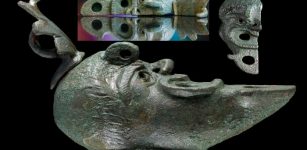 Rare Bronze Oil Lamp With A Face Cut In Half Unearthed In Israel
Archaeology | May 7, 2021
Rare Bronze Oil Lamp With A Face Cut In Half Unearthed In Israel
Archaeology | May 7, 2021 -
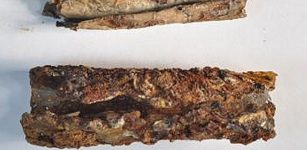 CT Scanning And 3D-Modelling Used To ‘Unfold’ Ancient Silver Plate Found In Jerash
Archaeology | Dec 26, 2015
CT Scanning And 3D-Modelling Used To ‘Unfold’ Ancient Silver Plate Found In Jerash
Archaeology | Dec 26, 2015 -
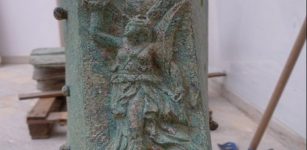 On This Day In History: Battle Of The Egadi Islands Took Place – On Mar 10, 241 BC
News | Mar 10, 2017
On This Day In History: Battle Of The Egadi Islands Took Place – On Mar 10, 241 BC
News | Mar 10, 2017 -
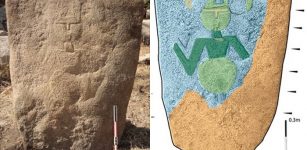 Unique Balchiria Stelae Engraved With A Goat-Like Figure Found On Corsica Is A Puzzle
Featured Stories | Feb 3, 2020
Unique Balchiria Stelae Engraved With A Goat-Like Figure Found On Corsica Is A Puzzle
Featured Stories | Feb 3, 2020 -
 Unusual Ancient Winged Half-Human And Half-Animal Divine Creature With Supernatural Powers
Artifacts | Jul 30, 2019
Unusual Ancient Winged Half-Human And Half-Animal Divine Creature With Supernatural Powers
Artifacts | Jul 30, 2019 -
 2,000-Year-Old Roman Sandal With Nails Found In Germany
Archaeology | Jun 28, 2024
2,000-Year-Old Roman Sandal With Nails Found In Germany
Archaeology | Jun 28, 2024 -
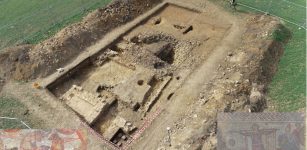 Amazing Finds At Rutland Roman Villa Reported By Archaeologists
Archaeology | Nov 29, 2022
Amazing Finds At Rutland Roman Villa Reported By Archaeologists
Archaeology | Nov 29, 2022 -
 Italian Sailors Knew Of America 150 Years Before Christopher Columbus – Ancient Documents Reveal
Archaeology | Oct 8, 2021
Italian Sailors Knew Of America 150 Years Before Christopher Columbus – Ancient Documents Reveal
Archaeology | Oct 8, 2021 -
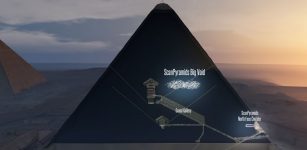 Scientists Argue Over The Mysterious Void Discovered Inside The Great Pyramid Of Giza
Archaeology | Nov 8, 2017
Scientists Argue Over The Mysterious Void Discovered Inside The Great Pyramid Of Giza
Archaeology | Nov 8, 2017 -
 Meet The First Neanderthal Family And Community
Archaeology | Oct 19, 2022
Meet The First Neanderthal Family And Community
Archaeology | Oct 19, 2022 -
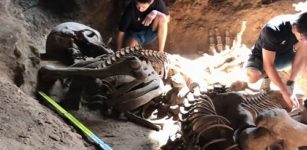 Ancient Giant Skeleton Discovered In Krabi Cave Confirms Legend Of The Nagas – Or Perhaps Not
Archaeology | May 17, 2020
Ancient Giant Skeleton Discovered In Krabi Cave Confirms Legend Of The Nagas – Or Perhaps Not
Archaeology | May 17, 2020 -
 Unique Glimpse Into The Secrets Of Mysterious Ancient Egyptian Manuscripts And Sacred Tablets Deliberately Hidden From The Outside World
Featured Stories | Dec 29, 2024
Unique Glimpse Into The Secrets Of Mysterious Ancient Egyptian Manuscripts And Sacred Tablets Deliberately Hidden From The Outside World
Featured Stories | Dec 29, 2024 -
 Shin-Au-Av – Secret Ancient Underground City Hidden Beneath Death Valley
Featured Stories | Jun 6, 2024
Shin-Au-Av – Secret Ancient Underground City Hidden Beneath Death Valley
Featured Stories | Jun 6, 2024 -
 Neanderthal Genes Influence Your Mood And Much More – Study Shows
Archaeology | Oct 6, 2017
Neanderthal Genes Influence Your Mood And Much More – Study Shows
Archaeology | Oct 6, 2017 -
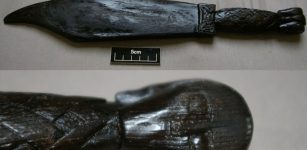 1,000-Year-Old Viking Weaver’s Sword Reveals Its Secrets
Archaeology | Apr 17, 2022
1,000-Year-Old Viking Weaver’s Sword Reveals Its Secrets
Archaeology | Apr 17, 2022 -
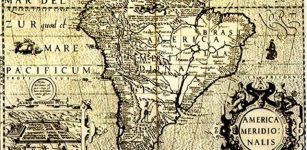 Ancient Enigma Of Mercator’s Amazing Map
Ancient Technology | May 4, 2015
Ancient Enigma Of Mercator’s Amazing Map
Ancient Technology | May 4, 2015 -
 Pre-Columbian Societies Declined 2,000 Years Ago Due To Sea Level Fall
Archaeology | Dec 22, 2021
Pre-Columbian Societies Declined 2,000 Years Ago Due To Sea Level Fall
Archaeology | Dec 22, 2021 -
 Camas Plant Stewardship In The Pacific Northwest Dates Back More Than 3,500 Years
Archaeology | May 23, 2024
Camas Plant Stewardship In The Pacific Northwest Dates Back More Than 3,500 Years
Archaeology | May 23, 2024 -
 Aaru – Field Of Reeds: Kingdom Of Osiris Was The Ancient Egyptian Paradise
Myths & Legends | Feb 29, 2024
Aaru – Field Of Reeds: Kingdom Of Osiris Was The Ancient Egyptian Paradise
Myths & Legends | Feb 29, 2024 -
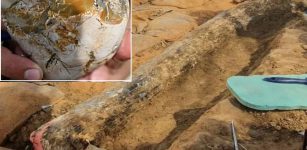 A Half-A Million-Year-Old Well-Preserved Elephant Tusk Unearthed In Israel
Archaeology | Sep 2, 2022
A Half-A Million-Year-Old Well-Preserved Elephant Tusk Unearthed In Israel
Archaeology | Sep 2, 2022

